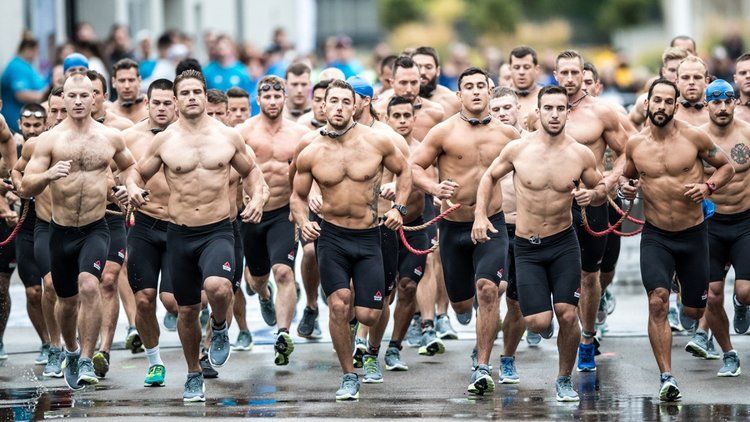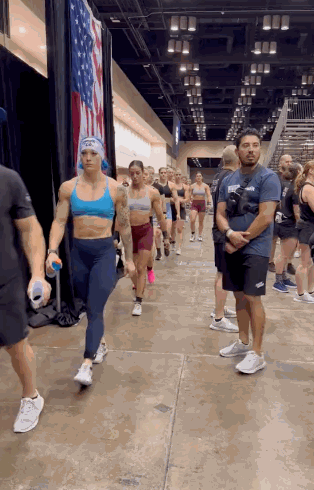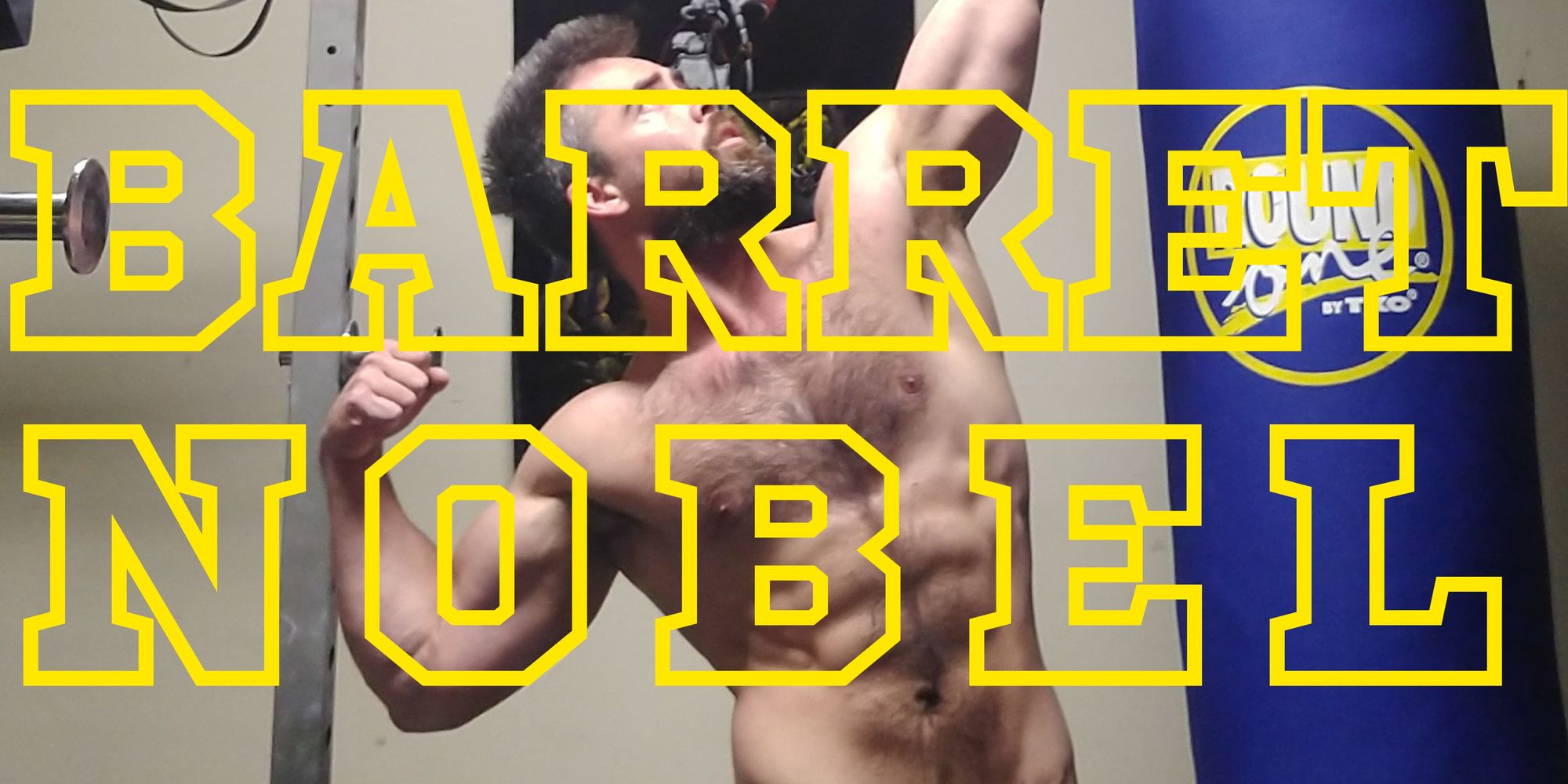The Whiteness of CrossFit
Delve into the racial disparities within CrossFit. Understand sociocultural factors, the implications, and explore strategies for fostering diversity

In the fitness world, CrossFit stands as a behemoth, celebrated and adopted globally. However, the question remains, "Is CrossFit truly inclusive and diverse?" This article explores the underlying issue of the whiteness of CrossFit, its implications, and the potential solutions.

Do Hard Things*: Achieve fitness goals with Fit for Life, a minimalist log book for men and women. Track progress and set monthly goals with expert design.
LMNT: Stay Salty! A tasty electrolyte drink mix that is formulated to help anyone with their electrolyte needs and is perfectly suited to folks fasting or following low-carb, whole-food diets
Nurecover: Leaders in cold therapy. A simple effective way to enjoy cold water therapy LITERALLY anywhere from your; House, Patio, Garden, Balcony, Work, Holiday, Apartment. Use my link for 20% off 🥶
yourcompany.com: Interested in sponsoring this blog? 📩 → blogSponsor@hybridathletepro.com
Understanding CrossFit
What is CrossFit?
CrossFit, at its core, is a high-intensity fitness training methodology that combines elements of cardio, weight lifting, and bodyweight exercises. It's renowned for its community-driven approach, competitive nature, and its ability to engender a sense of camaraderie among participants.
The Global Appeal of CrossFit
CrossFit's reach is undeniable, boasting a global community with thousands of affiliate gyms and millions of enthusiasts. It prides itself on being universally scalable, catering to individuals of all fitness levels. Yet, despite this universal approach, a demographic divide exists.
The Whiteness Issue in CrossFit
Racial Representation in CrossFit
When we examine the racial makeup of CrossFit athletes, trainers, and affiliates, particularly within the United States, the disparity becomes glaringly evident. Statistically, the vast majority are white. This lack of diversity within the ranks of CrossFit’s participants raises important questions about inclusivity, access, and representation within this globally-renowned fitness discipline.
CrossFit competitions and games, widely broadcast and followed, further underscore this racial imbalance. The high-profile athletes, those whose names become synonymous with the sport, are predominantly white. This lack of racial diversity is troubling, especially considering the potential influence these athletes wield over newcomers to the sport.
The lack of representation extends to CrossFit’s media and advertising as well. When you browse through official CrossFit websites, social media platforms, and promotional materials, the faces you most commonly see are white. This sends a subconscious message about who this sport is "for," which can dissuade potential participants from different racial and ethnic backgrounds from joining.
Furthermore, the lack of racial representation isn't just limited to athletes and media portrayal. It permeates deeper levels, including the coaching staff and affiliate owners. Often, these are the individuals who create the first impression of CrossFit for many newcomers. When people of color don’t see themselves represented among these front-line representatives, it can create a sense of alienation and reinforce the perception that CrossFit isn't meant for them.
However, it's essential to note that this isn't an issue isolated to CrossFit. Many other areas in the fitness industry also reflect similar racial disparities. These disparities are tied to larger societal structures and systemic issues, such as income inequality and lack of access to quality fitness facilities in communities of color.
The issue of racial representation in CrossFit is multi-layered, involving not just who is participating, but who is leading, coaching, and being promoted as the face of the sport. Addressing this imbalance is crucial for the future growth and inclusivity of CrossFit.
Structural Racism in the Fitness Industry
Structural racism in the fitness industry is a complex issue that extends far beyond the realms of any single fitness discipline, including CrossFit. It involves deeply ingrained societal structures and biases that perpetuate racial disparities in access to fitness, representation in the industry, and even the quality of health and fitness advice and support received.
One of the most significant manifestations of structural racism in the fitness industry is the issue of access. Fitness facilities, including gyms and CrossFit affiliates, are often concentrated in more affluent neighborhoods, which are predominantly white due to historic and ongoing housing discrimination. This results in a lack of quality fitness facilities within communities of color, creating a barrier to participation.
Additionally, the cost of fitness is often prohibitive for economically disadvantaged individuals, who are disproportionately people of color. Gym memberships, personal training, nutritional advice, and fitness equipment are often expensive. This economic barrier serves to further exacerbate the racial disparities in fitness participation.
Representation is another facet of structural racism in the fitness industry. Fitness media often showcases white individuals, reinforcing the notion that fitness and health are predominantly white spaces. Similarly, fitness professionals - from trainers to health coaches to influencers - are overwhelmingly white, creating a lack of relatable role models for people of color.
Moreover, structural racism also affects the quality of fitness advice and support individuals receive. Due to bias and lack of cultural competency, fitness professionals may not fully understand or cater to the unique health challenges and lifestyle factors that people of color face. This can lead to less effective fitness programs and lower overall satisfaction with fitness services.
Structural racism in the fitness industry intersects with other forms of systemic bias, such as body-shaming and fatphobia, which disproportionately impact people of color. Fitness ideals are often based on Eurocentric standards of beauty, perpetuating harmful stereotypes and further alienating people of color.
Addressing structural racism in the fitness industry requires concerted effort, from diversifying representation at all levels to ensuring fitness facilities and services are accessible and inclusive. Only then can the industry become truly equitable and empowering for all.
The Impact of Race on Fitness and Health
The Health Disparity Gap
The health disparity gap, a direct product of structural racism and socioeconomic inequalities, is a pressing concern. This gap refers to the disproportionate burden of diseases and health conditions faced by certain population groups, notably racial and ethnic minorities.
Racial and ethnic disparities in health outcomes are well-documented. From cardiovascular diseases to diabetes to certain types of cancer, numerous health conditions demonstrate significant discrepancies across racial lines. These disparities are not solely due to genetic differences but are heavily influenced by social determinants of health such as socioeconomic status, education, neighborhood and physical environment, employment, and social support networks, along with access to healthcare.
When focusing on the realm of fitness and wellness, the health disparity gap becomes even more pronounced. People of color are disproportionately affected by conditions like obesity and diabetes, which are directly linked to physical activity and diet. However, communities of color often lack access to safe, affordable, and convenient opportunities for physical activity, such as quality fitness centers, parks, and recreational programs. They also frequently lack access to nutritious food options due to the prevalence of "food deserts" in many minority neighborhoods.
These communities are also more likely to be exposed to environmental health hazards and to experience stress due to racial discrimination, both of which can negatively impact health. The combination of these factors contributes to lower rates of physical activity and higher rates of obesity and other health-related conditions among people of color.
Looking at the fitness industry, the health disparity gap is reflected in the racial makeup of its participants. The overwhelming whiteness of fitness spaces like CrossFit isn't just a question of representation, but it also indirectly contributes to perpetuating the health disparity gap. The alienation or exclusion of people of color from these spaces means they're less likely to reap the benefits of regular physical activity, thus exacerbating the disparity.
Race and Exercise: The Compounding Effect
The racial disparity in fitness participation, coupled with the health disparity gap, has a compounding effect on the health of communities of color. It's important to understand that this is not merely a correlation but a cause-and-effect relationship, deeply embedded within the systemic structures of our society.
Predominantly white fitness spaces, such as CrossFit, can inadvertently perpetuate a culture where people of color feel marginalized or excluded, leading to decreased participation. The lack of representation within these spaces – both in terms of participants and leadership roles – can further contribute to the sense of alienation, making it seem as though these activities are not "for them."
Consequently, this feeling of alienation can lead to lower rates of participation in physical activities, which, over time, can contribute to poorer health outcomes. Studies have repeatedly shown the numerous benefits of regular physical activity, from lower rates of obesity and heart disease to improved mental health. Therefore, the lack of participation in fitness activities like CrossFit can exacerbate existing health disparities among people of color.
Additionally, the compounding effect of race and exercise can also have psychological implications. The feeling of exclusion or alienation can lead to stress and anxiety, which can further deter individuals from participating in physical activities. This psychological burden, coupled with the potential physical health repercussions, creates a vicious cycle that can be hard to break.
In a broader societal context, this compounding effect can also contribute to reinforcing stereotypes and prejudices about people of color and physical fitness. The underrepresentation can feed into the false narrative that people of color are not interested or capable in certain fitness activities, creating a barrier that can deter aspiring athletes or fitness enthusiasts.
It's clear that this compounding effect of race and exercise has far-reaching implications, affecting not only individual health but also societal perceptions and stereotypes. Breaking this cycle requires a concerted effort to make fitness spaces more diverse, inclusive, and welcoming to all, regardless of race or ethnicity.
Addressing the CrossFit Diversity Problem
Initiatives Towards Diversity in CrossFit
Addressing the lack of diversity within the CrossFit community requires intentional and consistent efforts. Fortunately, some initiatives are underway to make CrossFit more inclusive and accessible to underrepresented communities.
One significant effort is the establishment of scholarship programs for people of color who aspire to become CrossFit trainers. These programs aim to lower the financial barriers to entry into the CrossFit training space, enabling more people from diverse backgrounds to become certified trainers. This not only increases diversity among trainers but also presents more role models for people of color in the CrossFit community.
In addition to scholarship programs, some CrossFit affiliates are actively seeking to expand their reach into communities of color. They're achieving this through outreach programs that involve setting up new affiliates in these communities or offering subsidized memberships to make CrossFit more affordable for individuals from lower socioeconomic backgrounds.
Similarly, initiatives such as the "Workout Diversity Initiative" strive to bring more diversity to the workouts and events within the CrossFit community. By featuring and celebrating athletes from diverse backgrounds in their programming, these initiatives aim to inspire a more inclusive future for the sport.
Inside the CrossFit community, there is a rising awareness and dialogue about the need for increased representation and inclusivity. This is seen through a growing number of discussions, forums, and seminars aimed at addressing these issues, signaling a positive shift towards a more diverse and inclusive CrossFit community.
While these initiatives are steps in the right direction, there's still a long way to go. Achieving true diversity and inclusivity within CrossFit, and the broader fitness industry, requires ongoing commitment, action, and vigilance.
The Role of Affiliates and Trainers
Affiliates and trainers play a crucial role in cultivating diversity in CrossFit. By creating welcoming and inclusive environments, they can encourage participation from underrepresented groups. Further, representation matters; having trainers and leaders of color can inspire broader participation.
The Future of CrossFit
Increasing Representation in CrossFit
The journey towards an inclusive CrossFit begins with increased representation. This not only involves promoting athletes of color but also means giving them a platform to influence the direction of CrossFit. Increased representation can challenge preconceptions, dismantle stereotypes, and ultimately make CrossFit a more inclusive space.
Building an Inclusive CrossFit Community
Creating a truly inclusive CrossFit community is a multifaceted task that requires efforts from all stakeholders, from the top-level management of CrossFit, Inc. to individual box owners and athletes. This is not just about increasing the diversity of participants and trainers but about creating an environment where everyone feels welcome, valued, and empowered.
One of the initial steps towards building an inclusive CrossFit community is fostering open conversations about race and diversity within the sport. This involves acknowledging the existing disparities and working towards understanding their underlying causes. Encouraging dialogue and education about the societal and systemic issues contributing to the lack of diversity in CrossFit can help generate awareness and empathy among participants.
Box owners and trainers have a crucial role to play in making their gyms more welcoming to people of color. This could involve diversity and inclusivity training for staff, modifying marketing and advertising materials to represent diverse participants, and actively reaching out to communities of color in their local area.
Moreover, designing programs that cater to the specific needs and circumstances of underrepresented groups can also contribute to building an inclusive community. This could involve adjusting class schedules to cater to working parents or providing scaled options to cater to varying fitness levels and abilities. Financial initiatives, such as tiered memberships and discounts, can also be helpful in making CrossFit more accessible.
On a broader scale, CrossFit, Inc. can support these efforts by amplifying diverse voices within the community, investing in initiatives that promote diversity and inclusion, and continually examining and refining their policies and practices to ensure they align with these goals.
Building an inclusive CrossFit community is a journey that requires consistent commitment and effort. However, by fostering a culture of inclusion, the CrossFit community has the potential to become a powerful force in bridging the racial divide in the fitness industry and contributing to better health outcomes for all.
The whiteness of CrossFit isn't just a CrossFit problem; it's reflective of the systemic issues that permeate society. However, by acknowledging and actively working to address these issues, we can aspire to build a more inclusive and equitable CrossFit community. The future of CrossFit, and indeed any fitness discipline, lies in its ability to welcome and nurture diversity.
FAQs
Why is diversity important in CrossFit?
Diversity is important as it ensures a truly inclusive environment where everyone feels welcomed. It also challenges stereotypes and encourages broader participation.
How can CrossFit become more inclusive?
CrossFit can become more inclusive by promoting diversity at all levels, offering scholarships to underrepresented groups, and consciously working to create a welcoming environment for everyone.
What initiatives are being taken to increase diversity in CrossFit?
Some initiatives include scholarships for trainers of color, outreach programs in underserved communities, and efforts to highlight diverse athletes within CrossFit media.
How does racial disparity affect health?
Racial disparity can lead to health inequities, as communities of color often have limited access to quality nutrition, safe spaces for exercise, and affordable healthcare.
How can affiliates and trainers help in cultivating diversity in CrossFit?
They can help by creating inclusive environments, encouraging participation from underrepresented groups, and by becoming positive role models for people of color in the fitness world.
If you're a regular ol' hybrid athlete, you might fall in love with my Tubes channel 👇
https://www.youtube.com/@BarretNobelFitness
It is not only about fitness, it is about life in general. I try to inspire regular people. Check it and subscribe to get notified when new vids come out 🤙
Thanks for reading 🙏!
Don't forget to follow me on social media for more tips, inspiration and community support! You can find me on Instagram, Facebook, Twitter and TikTok under the handle @BarretNobelFit.
See you in the next post!


